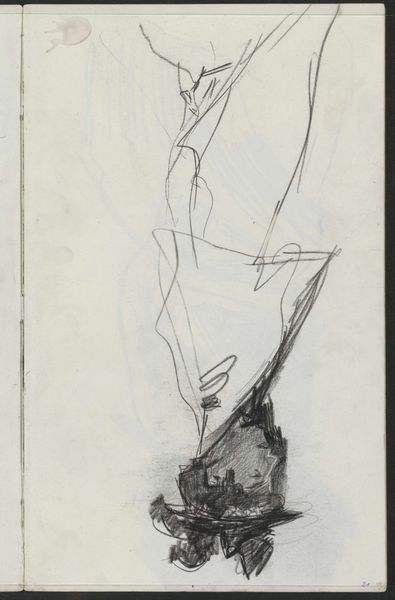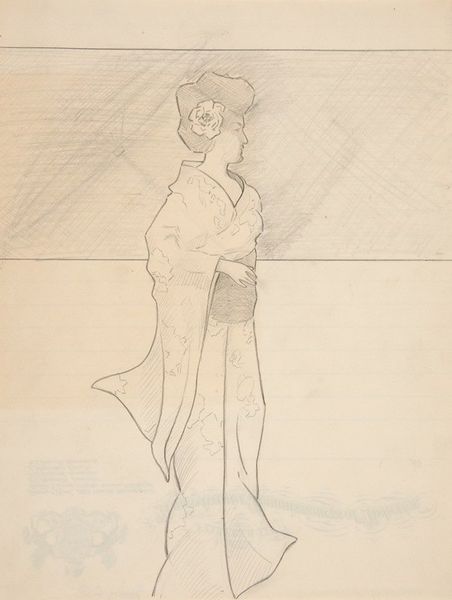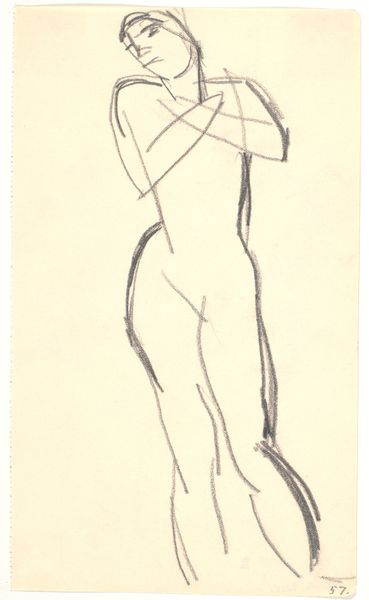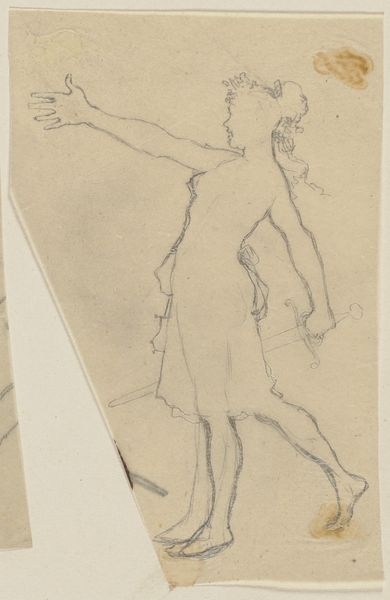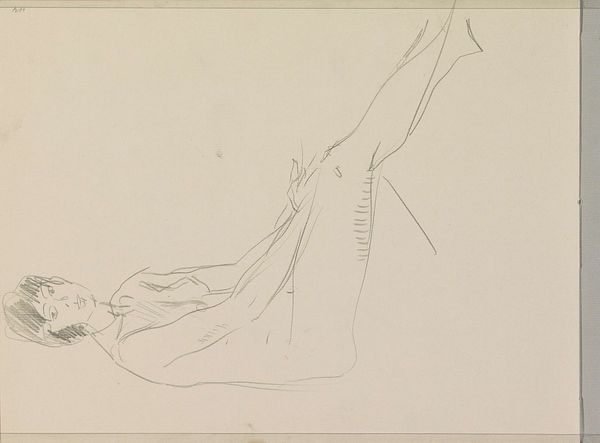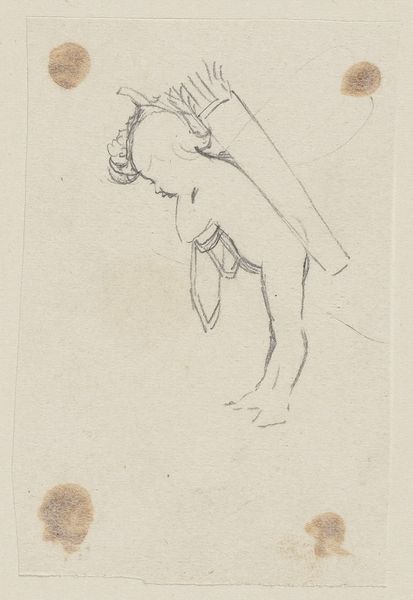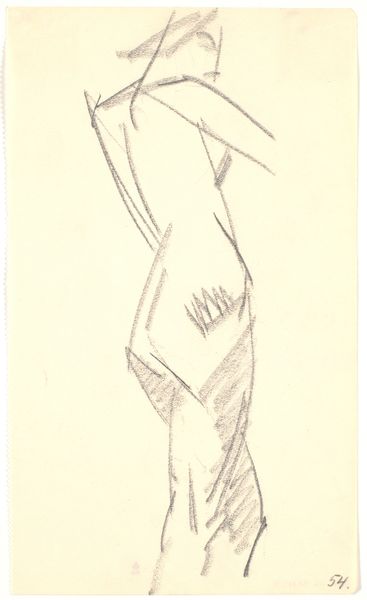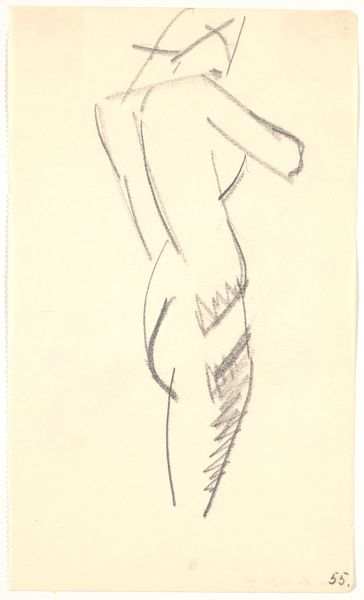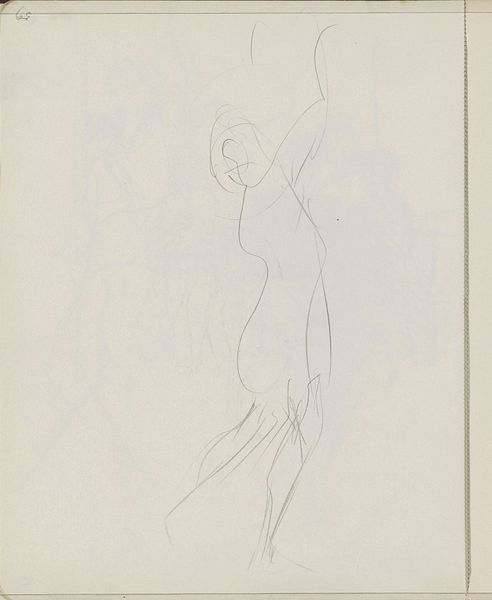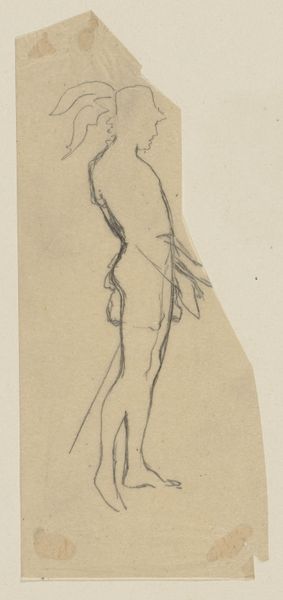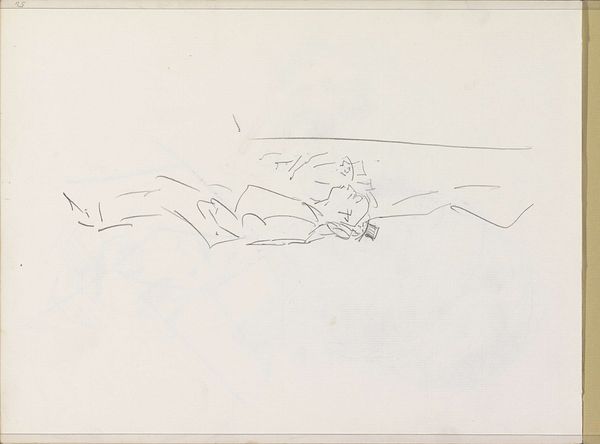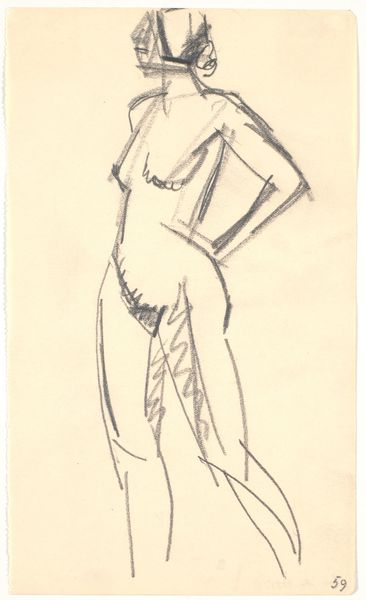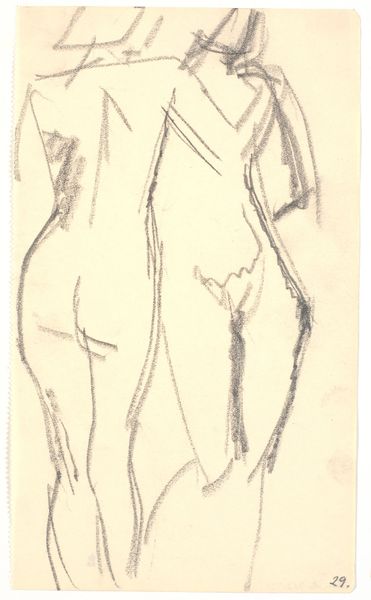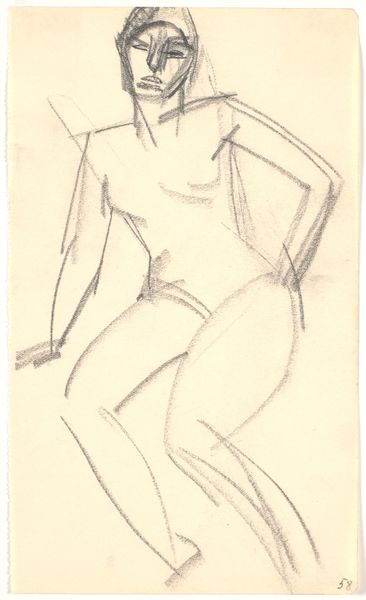
drawing, pencil
#
drawing
#
landscape
#
figuration
#
romanticism
#
pencil
#
genre-painting
Dimensions: 97 mm (height) x 59 mm (width) (bladmaal)
Editor: This is "Standing Italian Shepherd" by Martinus Rørbye, created around 1840. It's a pencil drawing, and I find the sketch-like quality rather charming, almost as if we are seeing the artist's first impression. How would you interpret this work? Curator: The charm you describe reflects a deliberate artistic choice tied to the Romantic era’s fascination with the pastoral. It’s not simply a portrait of a shepherd but a romanticized vision of rural life. How does this image of the shepherd conform to or challenge your preconceptions of the working class during the 19th century? Editor: It definitely softens those ideas. I wouldn’t necessarily think about the struggles of working life. Curator: Precisely. This idyllic representation served a purpose. Images like this were often consumed by an urban elite eager for a glimpse into a simpler life, untouched by industrialization. It glosses over the hardships of shepherding, instead highlighting an imagined freedom and connection to nature. Do you see this portrayal as being entirely harmless? Editor: Hmm, no. I see what you mean about the glossing over the struggles, almost hiding them, creating a false narrative about that kind of work. Curator: Exactly. And by doing so, it potentially reinforces existing social hierarchies. Who gets to experience leisure and beauty versus who labors, is a central unspoken dialogue in these types of works. This work then reflects societal power dynamics through this romantic lens. Editor: I never thought about it that way before. Seeing how art can be both beautiful and deeply engaged in social commentary is fascinating. Thank you. Curator: And thank you for bringing your fresh perspective. It's in these conversations that we unpack the many layers within even the simplest of drawings.
Comments
No comments
Be the first to comment and join the conversation on the ultimate creative platform.
